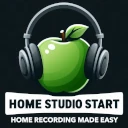Have you ever been struck by the urge to record your own voice belting out a tune? Whether you’re a seasoned musician, a shower singer, or someone who can’t help but croon along to the car radio, there’s something undeniably magnetic about the idea of capturing your own vocal renditions. If you’re nodding your head, you’re not alone! Many of us find our way to the mic, starting with the humble yet heartening world of karaoke – the gateway to vocal recording for countless aspiring stars.
Picture this: The spotlight hits, you clutch the microphone, the first familiar notes play, and the lyrics scroll on the screen. You’re not just singing; you’re putting a piece of yourself into every word. Karaoke night is where many of us get bitten by the recording bug, itching to go a step further and lay down a track that’s uniquely ours.
So, grab your headphones and clear your throat because we’re about to dive into the journey of personal audio recording. From the roar of the crowd at karaoke to the intimacy of a home studio, you’re in for a wild ride through melody and memory. Get ready to learn from the highs and lows of recording, the evolution from analog to digital, and the insider secrets that can make your audio sparkle. Let’s turn up the volume on your dreams and explore what it truly takes to capture the soul of your voice in a song!
The Analog Days: My Journey with a Tape Recorder
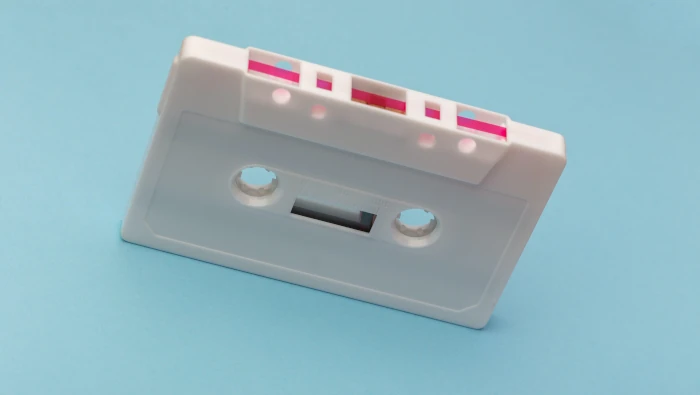
Ah, the sweet, nostalgic hiss of a cassette tape—a sound that teleports many of us straight back to the good old days. Picture this: it’s 1987, neon clothes are all the rage, and there I am with a K7 tape planted firmly in the deck, ready to embark on a thrilling audio expedition. I vividly remember the thrill of hitting the record button, the tape reels turning, capturing my voice for the very first time. In a whirlwind of excitement, I laid down everything—forgotten songs, homemade melodies, even the odd joke or two. The magic of it all? Hearing my own voice echoing back at me through the speakers. Pure joy!
Reminiscing about those times, I can’t help but acknowledge the impact they’ve had on my life. What seemed like simple, childlike fun turned out to be the humble beginnings of a lifelong audio adventure, one that would lead me down a path I could never have expected. Each recording session, no matter how unsophisticated, was a step towards a dream—a dream that continues to grow and evolve, even to this day.
Back then, we didn’t have fancy gear—a mishmash of cables, that temperamental play button, and a microphone that probably had seen better days. But did it matter? Not a chance. It was raw, it was real, and above all, it was mine. As I looped those tapes, mesmerized by the ability to capture sounds from thin air, I started to understand the profound connection we have with our recorded voices. A connection that’s as personal as it is powerful.
So, when I evoke the memories of my first audio recording, it’s not just a trip down memory lane. It’s the beginning of a tale. One where a simple cassette tape recorder became my gateway to the world of music production—a world that I’m still exploring with the same fervor as I did on that day in 1987. Stay tuned (pun intended), because the journey from analog tape to digital masterpieces has plenty of twists and turns that I’m eager to share with you.
The Overdubbing Revelation
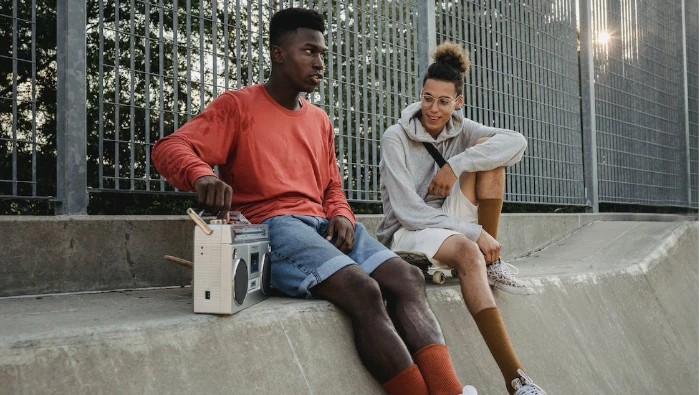
Embarking deeper into my musical exploits, a game-changing technique sparked a new level of enthusiasm for me in 1992: overdubbing. Overdubbing unlocked the door to a world where I could blend my voice with existing tracks, creating a layering effect that felt like studio magic. What’s fascinating about overdubbing is its simplicity—sing along with the music, with your vocals turned up a notch to assert your presence.
At that time, the concept of a personal computer was as distant to me as a faraway star. Overdubbing was my means to bridge that gap with tech that now seems quaint. Returning to my humble setup, that trusty Chinese tape recorder took on new life. With each play and record session, I aligned my voice with the original artist, and the exhilaration was palpable.
This was the closest I had come to capturing a song in my own voice, without the hefty price tag of professional equipment. It felt rebellious, inventive, and daring—like I was on the cusp of something great. My youthful ears reveled in the sounds I was able to concoct, not yet jaded by the imperfections a trained audio engineer might discern.
The technique of overdubbing is a prime example of how a spark of knowledge can illuminate new possibilities within the realm of audio recording, even for those of us with minimal resources. It unlocked a world of potential and set the stage for more sophisticated endeavors. Keep that in mind, dear reader, because sometimes, all it takes is one new trick to transform your creative journey. Stay tuned, as my adventure leads to even grander discoveries and the quest for quality sound continues to unfold.
Tech Meets Talent: The Camcorder Era
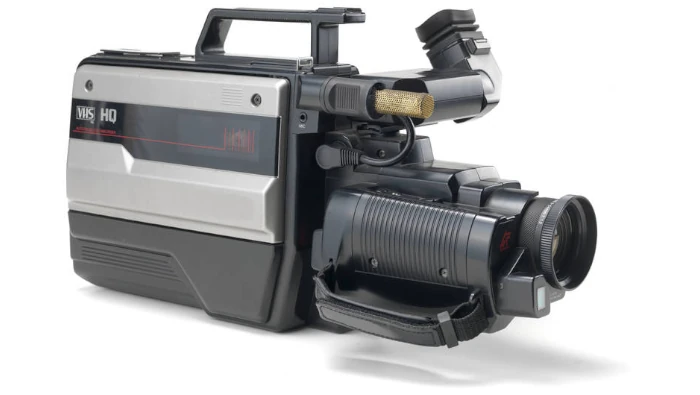
Way back in 1996, a new chapter in my journey of music recording unfolded when I stumbled upon a rather unconventional tool – the VHS camcorder. Back then, this behemoth piece of technology was state-of-the-art, boasting features that were nothing short of revolutionary for a budding artist like myself. It came equipped with a powerful condenser microphone, had an audio compressor built right in, and offered a whole new world of possibilities.
At this point, my guitar skills were just starting to take shape, and I was eager to blend my vocal experiments with the strum of steel strings. The camcorder became my ally. I’d hit record and serenade the lens while it captured not just the sight of my early attempts at songcraft but, more importantly, the sounds.
The outcome of those camcorder sessions was intriguing. To my ears, the sound was crisp, clear, and it brought a certain warmth that felt pleasant and authentic. There was an undeniable charm to hearing my voice and guitar integrated through this ‘dinosaur head’ of a device – yet, it wasn’t perfect. Despite the marked improvement over my K7 tape days, these recordings were still miles away from what you’d expect from a commercial studio setup.
But you have to start somewhere, right? In those days, an enthusiastic nod from a friend or a family member who listened to those camcorder recordings was equivalent to a Grammy win in my book. It was these moments that slowly built my confidence and drive to push the envelope further, to seek out the quality that I longed for.
Though its size and shape may provoke a gentle chuckle today, the VHS camcorder holds a special place in my heart. It represented the intersection where technology met my raw talent and allowed me to expand my creative horizons. Those recordings bear witness to a time of learning, experimenting, and growing as an artist – valuable steps on the path to achieving the polished sound I dreamed of.
So, for all of you out there with your sights set on pristine home recordings, remember that the journey is part of the adventure. Embrace every tool at your disposal, no matter how unconventional it may seem. You never know; your current limitations might just be the catalysts propelling you towards innovation and success.
Upgrading to Digital: My First Computerized Recordings
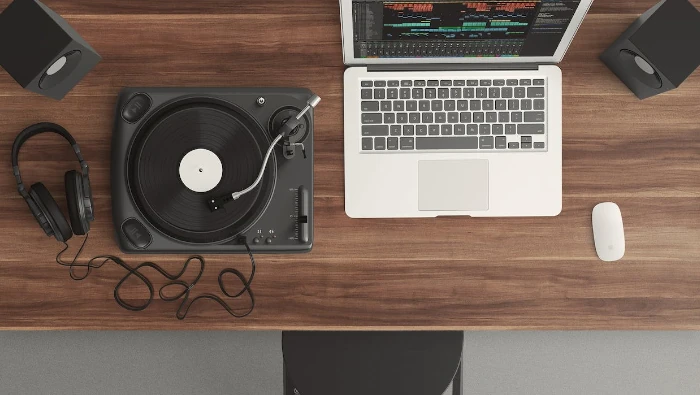
If you ever yearned to record your own album, the transition to digital technology was likely a game-changer for you, as it was for me. Back in ’97, when computers were still a burgeoning marvel in the average household, I was fortunate enough to dive into the world of digital audio.
This leap was monumental. Imagine swapping your bicycle for a motorcycle overnight—that was the sheer exhilaration I felt. I began by transferring the raw authenticity captured by my camcorder directly to my first computer. Plugging it right into the line-in jack, that humming sound card awaited to encapsulate my musical experiments.
The process was straightforward yet revolutionary: converting the recordings to Wave audio files, tinkering with them using one of the earliest incarnations of Sound Forge, and finally, burning them onto a CD-R. It wasn’t just about recording; it was the thrill of shaping sound, of brushing it up to shine on a tangible CD.
The results? Well, they gave me my very first CD. But here’s the truth every aspiring artist discovers—your first iteration is rarely your magnum opus. I hungered for more; for the depth and clarity that could lift my music from the confines of a bedroom project to the expansive realms of professional production.
Sure, I was proud of what I’d achieved. Nevertheless, I grappled with the reality of audio production: limitations in hardware and knowledge can feel like shackles on your creativity. Yet, the resolve to aim higher amplified within me. This early flirtation with digital recording ignited an unstoppable quest for excellence that I carry to this day.
And, spoiler alert: you don’t need all the bells and whistles of a pricey studio setup to produce quality sound. But I’ll get into that a little later. So, stick with me, because this journey of recording evolution just gets better!
The Struggle for Quality: Perception vs. Reality
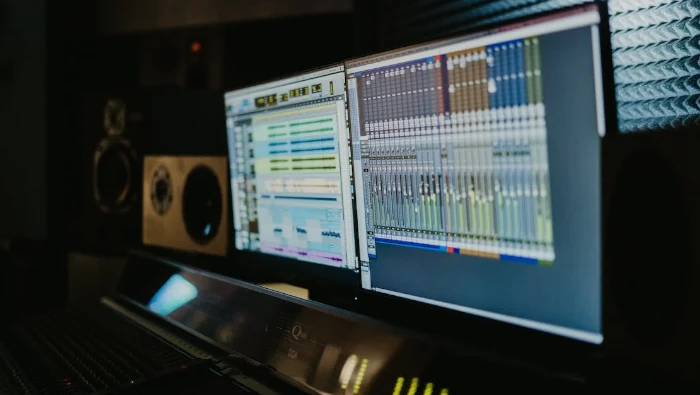
Have you ever belted out a tune in the shower, feeling like a Grammy winner, only to record it and think… “Is that really me?” It happens to the best of us. There’s this fascinating dichotomy between how we perceive our own voice and the raw truth captured by an unforgiving microphone.
When we sing in acoustically friendly spaces, we often fool ourselves into believing we’re nailing studio-level quality. The gently reverberating walls sprinkle our performance with a dash of magic. However, our recording devices lack the sophisticated processing of our brains. They don’t mix, balance timbres, or filter out that pesky over-resonance in real-time. And that’s when reality hits you harder than a crowd-surfing stage diver.
You might think you need the big-budget studio gear you’ve seen in glossy magazines to capture the glory of your voice. But here’s a little secret: that’s not always the case. Sure, top-notch equipment can help, but your knowledge and savvy use of what you have can bridge the gap significantly.
The truth is, your ears and mind are the most elite audio engineers you could ask for. They create a live mix that’s ridiculously hard to replicate in a recording. The equipment doesn’t think. It faithfully records what’s there, and sometimes, what’s there is a data loss extravaganza.
So what can you do? Start by understanding that capturing great audio is partly about creating an illusion—an illusion crafted from the knowledge of audio’s nuances and a pinch of technical wizardry. I’ll delve deeper into these sleights of hand in another article. For now, remember: it’s not just about the tools you own but also the craft you hone. Stay tuned for our next session, where we’ll start turning those “Is that really me?” moments into “That’s definitely me, and it’s awesome!”
Embracing The Process: The Secret to Consistent Quality
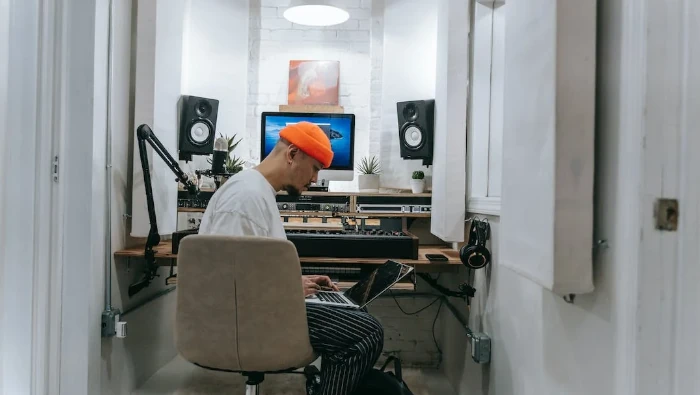
If you’ve dipped your toes into the vast ocean of home recording, you’ll know that creating that crisp, professional sound is no small feat. But don’t let that deter you; the secret sauce to consistent, high-quality audio lies in embracing a well-crafted production process.
Think of this process as a recipe—a series of steps that, when followed precisely, yield the same delicious results every time. In recording terms, it’s your roadmap to sonic excellence. What you’re aiming for is less about expensive gear and more about understanding the sequence that turns a rough recording into commercial-grade gold.
So, where do you start? First, get into the habit of meticulously documenting your recording sessions. Take notes on microphone placement, room setup, EQ settings, and any other variables. Then, experiment—try out different techniques until you find the combination that makes your tracks shine.
Standardize what works
Once you’ve found a method that yields the sound you love, make it your default setting. This doesn’t stifle creativity; it simply sets a reliable baseline for quality.
It’s also beneficial to immerse yourself in the work of diverse producers and genres. By analyzing their outcomes, you can understand how sound behaves across different setups and adapt your approach to mirror contemporary styles—sans the high-end studio.
And here’s a little insider info: some might say that each home studio has its quirks and there are no universal formulas for success. Well, let’s flip the script on that. With mixing and mastering, it’s entirely possible to iron out those quirks and achieve a sound that competes with the pros. This is the crux of what our Home Studio Course will cover—giving you the insider knowledge to create audio that stands tall in today’s market.
Finally, remember that copying the hits isn’t just about imitation—it’s about understanding the elements of success and bending them to your artistic will. This approach, using what we call the HSF (Home Studio Formula) framework, can fast-track you to the results you desire.
Improving your home recordings is a journey, and yes, sometimes it’ll feel like trial and error. But with these tips and techniques, you’re not just shooting in the dark. You’re honing your craft with precision, saving you both time and energy that you can channel into the music you’re passionate about.
And remember, we’re in this together. With our upcoming course and the community of fellow home recording enthusiasts, you’re on the path to not just good, but great recordings. Stay tuned, and let’s make waves in the world of music production!
Conclusion: Your Path to Better Home Recordings
Well, passionate recorders and music enthusiasts, we’re at the end of our sonic journey today, but this is just the beginning of your adventure in the world of home recordings. From nostalgic tape decks to powerful digital setups, your quest for that crisp, professional sound is within reach. Remember, your unique voice deserves to be heard in all its glory!
The key takeaway? Embrace the process. Just as a great song has structure and rhythm, your recording efforts must follow a system—a production process that works for you. Take the time to experiment, document your steps, and identify the sequence that brings out the best in your tracks.
And hey, don’t let the shadows of expensive gear intimidate you. Innovation and creativity often sprout from limitations. By applying the knowledge you’ve acquired and the tips shared, plus a sprinkle of patience, you’ll be amazed at how far you can push the boundaries of your home studio.
Stay tuned for our upcoming course where we’ll dive even deeper into these concepts. It’s designed to equip you with the techniques and insider know-how to elevate your recordings from good to gobsmackingly great.
Until then, keep listening, keep learning, and most importantly, keep recording. The world is eager for your next hit. Here’s to achieving clarity, depth, and emotion in your home recordings. Happy mixing, and I wish you the best of luck on your recording endeavors!
